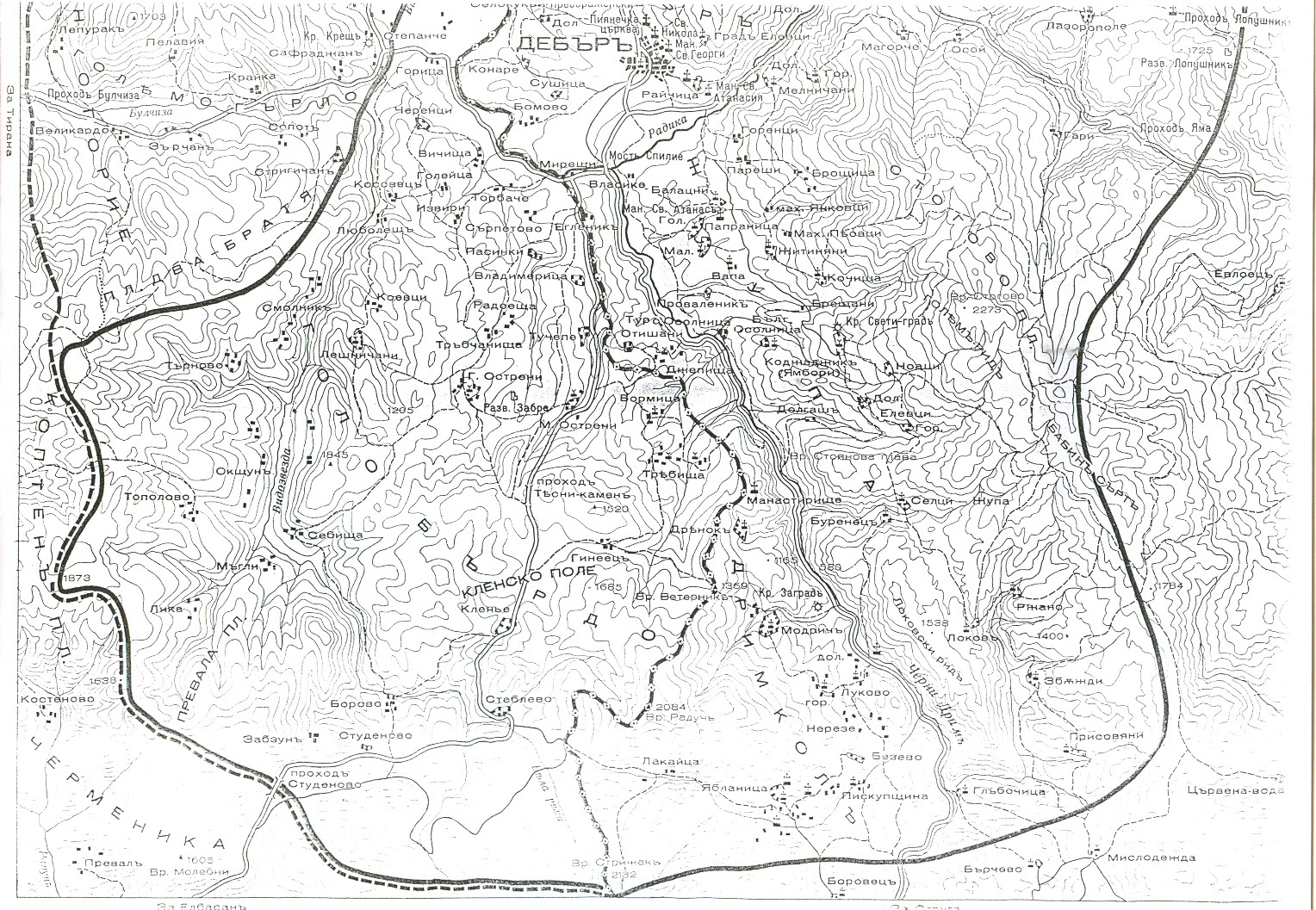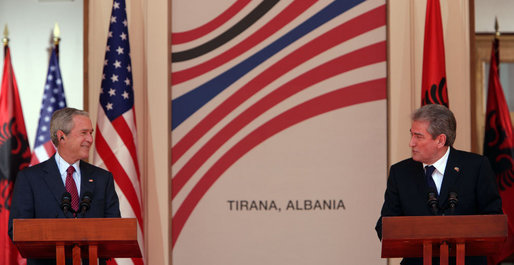|
Trebisht
Trebisht ( mk, Требишта, bg, Требище or Требища) is a former municipality in the Dibër County, eastern Albania. At the 2015 local government reform it became a subdivision of the municipality Bulqizë. The population at the 2011 census was 993.2011 census results Geography The village is situated in the geographical area of . Within the municipality, the village of Trebisht consists of the three neighborhoods of Trebisht-Muçinë, Trebisht-Balaj, and Trebisht-Çelebi. (in the local Macedonian dialect[...More Info...] [...Related Items...] OR: [Wikipedia] [Google] [Baidu] |
Gollobordë
Gollobordë ( sq-definite, Golloborda, bg, Голо Бърдо/Golo Bărdo, mk, Голо Брдо/Golo Brdo) refers to a geographical area of traditionally 24 villages of which 18 are situated primarily in eastern Albania, with a small portion consisting of six villages lying within North Macedonia. This region is located within the Dibër and Elbasan counties which contain both Macedonian and Albanian villages. This region, like neighboring regions, has historically been economically linked to the city of Debar, which was traditionally referred to by inhabitants as simply "the City". History Ottoman period The Islamization process is held to have occurred in Golloborda relatively late in Ottoman times.Toncheva, Veselka (2013). "The Slavonic Community from the Golo Bardo Region, Republic of Albania: Traditions, Music, Identity". ''Our Europe. Ethnography – Ethnology – Anthropology of Culture''. Volume 2. Pages 40–42 In 1519, the region was still entirely Christian.Lima ... [...More Info...] [...Related Items...] OR: [Wikipedia] [Google] [Baidu] |
Bulqizë
Bulqizë (; sq-definite, Bulqiza) is a Municipalities of Albania, municipality in Dibër County, northeastern Albania. The municipality consists of the administrative units of Fushë-Bulqizë, Gjoricë, Martanesh, Ostren, Shupenzë, Trebisht, Zerqan with Bulqizë constituting its seat. As of the Institute of Statistics (Albania), Institute of Statistics estimate from the 2011 census, there were 8,177 people residing in Bulqizë and 32,210 in Bulqizë Municipality. Demographic history Bulqizë is recorded in the Ottoman Empire, Ottoman ''defter'' of 1467 as a ''Hass (Ottoman), hass-ı mir-liva'' and ''Dervendjis, derbendci'' settlement in the vilayet of ''Gollobordë, Dulgoberda''. Although the register's complete survey on the village is missing, the following household heads are attested: ''Dimitri Bogdani'', ''Kolë Sharqini'', ''Gjin Kimeza'', ''Gjin Kolandi'', ''Nikolla Budi'', ''Martin Bardi'', ''Progon Buljani'', ''Maqe Kimëza'', ''Istvan Nenada'', ''Progon Bogdani'', '' ... [...More Info...] [...Related Items...] OR: [Wikipedia] [Google] [Baidu] |
Ethnic Macedonians
Macedonians ( mk, Македонци, Makedonci) are a nation and a South Slavic ethnic group native to the region of Macedonia in Southeast Europe. They speak Macedonian, a South Slavic language. The large majority of Macedonians identify as Eastern Orthodox Christians, who speak a South Slavic language, and share a cultural and historical "Orthodox Byzantine–Slavic heritage" with their neighbours. About two-thirds of all ethnic Macedonians live in North Macedonia and there are also communities in a number of other countries. The concept of a Macedonian ethnicity, distinct from their Orthodox Balkan neighbours, is seen to be a comparatively newly emergent one. The earliest manifestations of an incipient Macedonian identity emerged during the second half of the 19th century among limited circles of Slavic-speaking intellectuals, predominantly outside the region of Macedonia. They arose after the First World War and especially during 1930s, and thus were consolidated by ... [...More Info...] [...Related Items...] OR: [Wikipedia] [Google] [Baidu] |
Former Municipalities In Dibër County
A former is an object, such as a template, Gauge block, gauge or cutting Die (manufacturing), die, which is used to form something such as a boat's Hull (watercraft), hull. Typically, a former gives shape to a structure that may have complex curvature. A former may become an integral part of the finished structure, as in an aircraft fuselage, or it may be removable, being using in the construction process and then discarded or re-used. Aircraft formers Formers are used in the construction of aircraft fuselage, of which a typical fuselage has a series from the nose to the empennage, typically perpendicular to the Flight control surfaces#Longitudinal_axis, longitudinal axis of the aircraft. The primary purpose of formers is to establish the shape of the fuselage and reduce the column length of stringers to prevent instability. Formers are typically attached to longerons, which support the skin of the aircraft. The "former-and-longeron" technique (also called stations and string ... [...More Info...] [...Related Items...] OR: [Wikipedia] [Google] [Baidu] |
Sali Berisha
Sali Ram Berisha (; born 15 October 1944) is an Albanian conservative politician and former cardiologist who served as the second President of Albania from 1992 to 1997 and Prime Minister from 2005 to 2013. He is also the current chairman of the Democratic Party of Albania which has been disputed. On 9 September 2021 Berisha was expelled by party chairman Lulzim Basha from the Democratic Party's Parliamentary Group due to legal issues with the US Department of State. This decision led to Berisha starting a nation-wide movement to remove Basha as leader of the Democratic Party, causing a major rift in the party's internal structures, between Berisha's and Basha's supporters. Early life and career Berisha was born in Viçidol, then Tropojë District, in northern Albania, to a Muslim family of mountain farmers. As a child, he tended sheep. After his father became a functionary of the Party of Labour of Albania, Berisha enjoyed a higher education and was then able to study m ... [...More Info...] [...Related Items...] OR: [Wikipedia] [Google] [Baidu] |
Macedonian Academy Of Sciences And Arts
The Macedonian Academy of Sciences and Arts ( mk, Македонска Академија на Науките и Уметностите, МАНУ) is an academic institution in North Macedonia. History The Academy of Sciences and Arts was established by the Socialist Republic of Macedonia's assembly on 23 February 1967 as the highest scientific, scholarly and artistic institution in the country with the aim of monitoring and stimulating the sciences and arts. The Academy's objectives are to survey the cultural heritage and natural resources, to assist in the planning of a national policy regarding the sciences and arts, to stimulate, co-ordinate, organize and conduct scientific and scholarly research and to promote artistic achievement, especially where particularly relevant to North Macedonia. The Academy facilitates scholarly, scientific and artistic endeavors on the part of its members. It also works on developing international co-operation in the fields of the sciences and art ... [...More Info...] [...Related Items...] OR: [Wikipedia] [Google] [Baidu] |
Pomak
Pomaks ( bg, Помаци, Pomatsi; el, Πομάκοι, Pomáki; tr, Pomaklar) are Bulgarian-speaking Muslims inhabiting northwestern Turkey, Bulgaria and northeastern Greece. The c. 220,000 strong ethno-confessional minority in Bulgaria is recognized officially as Bulgarian Muslims by the government. The term has also been used as a wider designation, including also the Slavic Muslim populations of North Macedonia and Albania. Most Pomaks today live in Turkey where they have settled as muhacirs as a result of escaping previous ethnic cleansing in Bulgaria. Bulgaria recognizes their language as a Bulgarian dialect whereas in Greece and Turkey they self-declare their language as the Pomak language. The community in Greece is commonly fluent in Greek, and in Turkey, Turkish, while the communities in these two countries, especially in Turkey, are increasingly adopting Turkish as their first language as a result of education and family links with the Turkish people. They are ... [...More Info...] [...Related Items...] OR: [Wikipedia] [Google] [Baidu] |
Bulgarians
Bulgarians ( bg, българи, Bǎlgari, ) are a nation and South Slavic ethnic group native to Bulgaria and the rest of Southeast Europe. Etymology Bulgarians derive their ethnonym from the Bulgars. Their name is not completely understood and difficult to trace back earlier than the 4th century AD, but it is possibly derived from the Proto-Turkic word ''*bulģha'' ("to mix", "shake", "stir") and its derivative ''*bulgak'' ("revolt", "disorder"). Alternative etymologies include derivation from a compound of Proto-Turkic (Oghuric) ''*bel'' ("five") and ''*gur'' ("arrow" in the sense of "tribe"), a proposed division within the Utigurs or Onogurs ("ten tribes"). Citizenship According to the Art.25 (1) of Constitution of Bulgaria, a Bulgarian citizen shall be anyone born to at least one parent holding a Bulgarian citizenship, or born on the territory of the Republic of Bulgaria, should they not be entitled to any other citizenship by virtue of origin. Bulgarian citizenship sh ... [...More Info...] [...Related Items...] OR: [Wikipedia] [Google] [Baidu] |
South Slavic Languages
The South Slavic languages are one of three branches of the Slavic languages. There are approximately 30 million speakers, mainly in the Balkans. These are separated geographically from speakers of the other two Slavic branches (West and East) by a belt of German, Hungarian and Romanian speakers. History The first South Slavic language to be written (also the first attested Slavic language) was the variety of the Eastern South Slavic spoken in Thessaloniki, now called Old Church Slavonic, in the ninth century. It is retained as a liturgical language in Slavic Orthodox churches in the form of various local Church Slavonic traditions. Classification The South Slavic languages constitute a dialect continuum. Serbian, Croatian, Bosnian, and Montenegrin constitute a single dialect within this continuum. *Eastern ** Bulgarian – (ISO 639-1 code: bg; ISO 639-2 code: bul; SIL code: bul; Linguasphere: 53-AAA-hb) ** Macedonian – (ISO 639-1 code: mk; ISO 639-2(B) code: mac; IS ... [...More Info...] [...Related Items...] OR: [Wikipedia] [Google] [Baidu] |
Bulgarian Language
Bulgarian (, ; bg, label=none, български, bălgarski, ) is an Eastern South Slavic language spoken in Southeastern Europe, primarily in Bulgaria. It is the language of the Bulgarians. Along with the closely related Macedonian language (collectively forming the East South Slavic languages), it is a member of the Balkan sprachbund and South Slavic dialect continuum of the Indo-European language family. The two languages have several characteristics that set them apart from all other Slavic languages, including the elimination of case declension, the development of a suffixed definite article, and the lack of a verb infinitive. They retain and have further developed the Proto-Slavic verb system (albeit analytically). One such major development is the innovation of evidential verb forms to encode for the source of information: witnessed, inferred, or reported. It is the official language of Bulgaria, and since 2007 has been among the official languages of the Eur ... [...More Info...] [...Related Items...] OR: [Wikipedia] [Google] [Baidu] |
Dibër County
Dibër County (; sq, Qarku i Dibrës) is one of the 12 counties of the Republic of Albania, spanning a surface area of with the capital in Peshkopi. The county borders on the counties of Durrës, Elbasan, Kukës, Lezhë, Tirana and the country of North Macedonia. It is divided into the four municipalities of Bulqizë, Dibër, Klos and Mat. The municipalities are further subdivided into 290 towns and villages in total. Topographically, the county is dominated by mountainous and high terrain, with a great variety of natural features including valleys, canyons, gorges, rivers, glacial lakes and dense forests. Various mountains ranging between meters above sea level run the length of the county from north to south, including the Korab mountains in the east with Mali i Gramës and Korab at an altitude of being the highest mountain in the county and as well as in Albania. The Dejë mountain rises in the center, while in the east the county is dominatet by the Lura mountains. ... [...More Info...] [...Related Items...] OR: [Wikipedia] [Google] [Baidu] |






